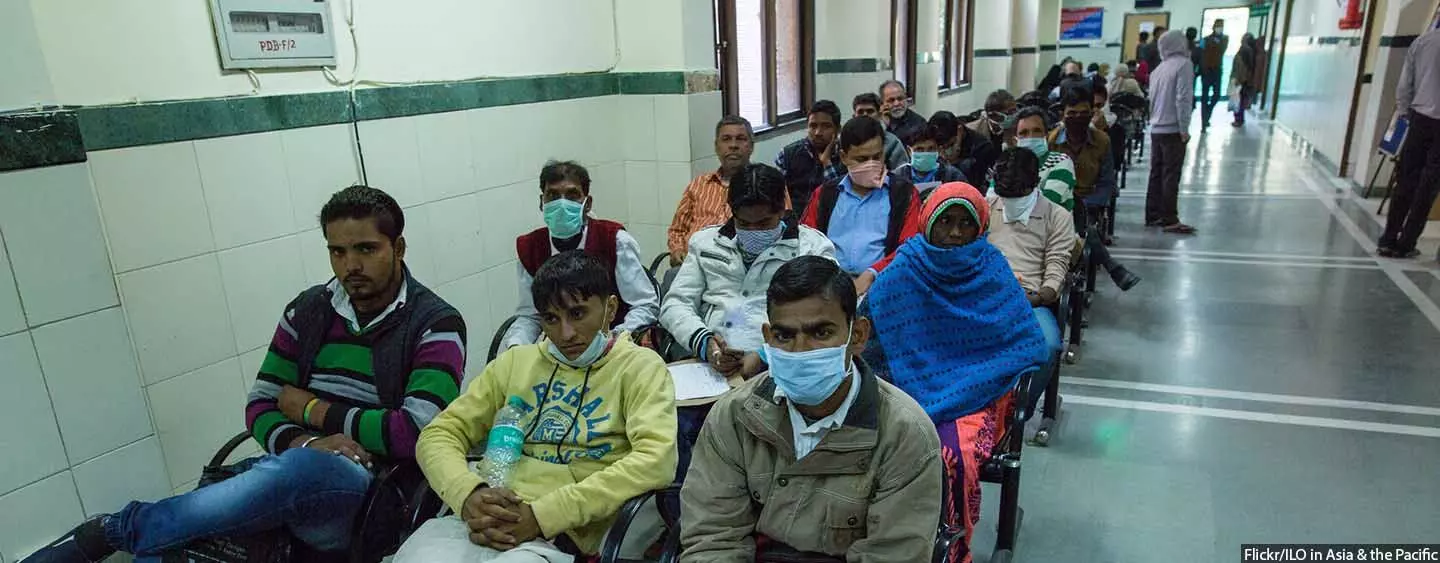Rs 3: Amount India Spends Every Day On Each Indian’s Health

New Delhi: The amount India spends on public health per capita every year is Rs 1,112, less than the cost of a single consultation at the country’s top private hospitals--or roughly the cost of a pizza at many hotels. That comes to Rs 93 per month or Rs 3 per day.
Spending 1.02% of its gross domestic product (GDP) in 2015--a figure which remained almost unchanged in six years since 2009--India’s public health expenditure is amongst the lowest in the world, lower than most low-income countries which spend 1.4% of their GDP on health, according to the National Health Profile, 2018, released by union minister for health and family welfare, J P Nadda, on June 19, 2018.
Sri Lanka spends about four times as much as India per capita on health, and Indonesia more than twice. India spends 1.02% of gross domestic product (GDP) on public health, compared to 1.4% by low-income countries, the new data reveal.
The equivalent proportion of GDP spent on health in the Maldives is 9.4%, in Sri Lanka 1.6%, in Bhutan 2.5% and in Thailand 2.9%.
The National Health Profile covers information on demographic, socio-economic, health status and health finance indicators, and on health infrastructure and human resources.
The National Health Policy 2017 talked about increasing public-health spending to 2.5% of GDP by 2025, but India hasn’t yet met the 2010 target of 2% of GDP, IndiaSpend reported in April 2017.
Source: National Health Profile, 2018
India’s low public-health spending is one reason why patients turn to the private sector for healthcare. Indians are the sixth biggest out-of-pocket (OOP) health spenders in the low-middle income group of 50 nations, we reported in May 2017. These costs push around 32-39 million Indians below the poverty line every year, according to various studies.
Without a significant increase in its healthcare budget, India’s health targets seem difficult to achieve: Reducing the infant mortality rate from 41 deaths per 1,000 live births in 2015-16 to 28 by 2019 and maternal mortality ratio from 167 deaths per 100,000 births in 2013-14 to 100 by 2018-2020, and eliminating tuberculosis by 2025.
India’s $16 (Rs 1112) per capita spend on health is fourth lowest in the South East Asian Region.
Public Expenditure On Health, South East Asia
Source: National Health Profile, 2018
“If you don’t increase public financing, you get into the mindset that the public sector cannot do anything,” Srinath Reddy, president of Public Health Foundation of India, an advocacy, told IndiaSpend in January 2018. “You have to leave it to the private sector to do what it wants and lose the opportunity to create a system that provides accessible and affordable care, which is the essence of universal health coverage.”
Which state is the best and the worst?
In order to evaluate the health performance of states by health spending, IndiaSpend compared the 2017-18 health index of NITI Aayog, the government’s think tank, with the per capita spending of Indian states on health.
The NITI Aayog’s health index measures a variety of health outcomes, including infant and under-five mortality rate, sex ratio at birth, immunisation coverage, institutional deliveries and health monitoring and governance indicators, such as occupancy of hospital beds, and processes, including infrastructure and human resources.
Mizoram’s per capita health expenditure is Rs 5,862, almost five times the Indian average, with the state spending 4.2% of its GDP on health in 2015. Arunachal Pradesh (Rs 5,177) and Sikkim (Rs 5,126) followed at the top.
At the other end of the spectrum, Bihar spent Rs 491 per capita on health, less than half the Indian average, spending 1.33% of its GDP on health. Just above Bihar were Madhya Pradesh (Rs 716) and Uttar Pradesh (Rs 733).
Mizoram ranks second on the NITI Aayog’s health index, while Bihar ranks fourth from the bottom.
However, health spending alone cannot improve a state’s health performance.
Nagaland, which spent Rs 2,450 on health per capita, ranked third from the bottom on the health index, while Kerala, which spent Rs 1,463, ranked first on the health index.
Source: Niti Aayog, National Health Profile, 2018
Update and correction: The story has been modified to mention the year for the estimate for public expenditure as %GDP. An earlier version of the story mentioned public health expenditure almost unchanged in nine years since 2009, it has been corrected to six years since 2009.
(Yadavar is a principal correspondent with IndiaSpend.)
We welcome feedback. Please write to respond@www.health-check.in. We reserve the right to edit responses for language and grammar.


